The Well at World's End by William Morris
Sometimes, I read books so you don’t have to. The Well at World’s End really is a seminal work, but it is also a slog of a book that I wouldn’t recommend to someone reading for fun. But it is a fascinating story, and the prototype of the generic medieval setting that has become the standard for mythic fiction post D&D.
Following With Both Hands editorial policy, I intend to fully spoil this book, but as it was published 126 years ago and it is a bit of challenge to get through, I think this is for the best.
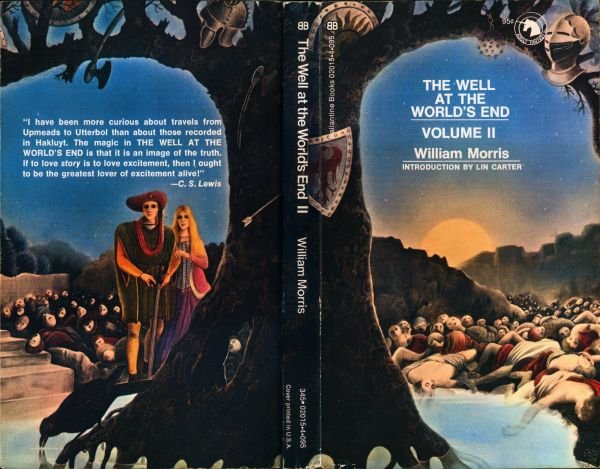
The Well at World’s End by William Morris
I started this book because of a post by friend of the blog Isegoria, which pointed me to John Rateliff’s essay on Wizards of the Coast’s website [preserved by the Web Archive]. Rateliff wrote about Morris because of Morris’ influence on J. R. R. Tolkien, which is clear to me after reading the book. But it is also apparent that Morris directly influenced many other writers in the twentieth century. You can see an example in the blurb by C. S. Lewis on the back cover of the 1970s Ballantyne Books edition of The Well at World’s End.
"I have been more curious about travels from Upmeads to Utterbol than about those recorded in Hakluyt. The magic in THE WELL AT THE WORLD'S END is that it is an image of the truth. If to love story is to love excitement, then I ought to be the greatest lover of excitement alive!" -C. S. Lewis
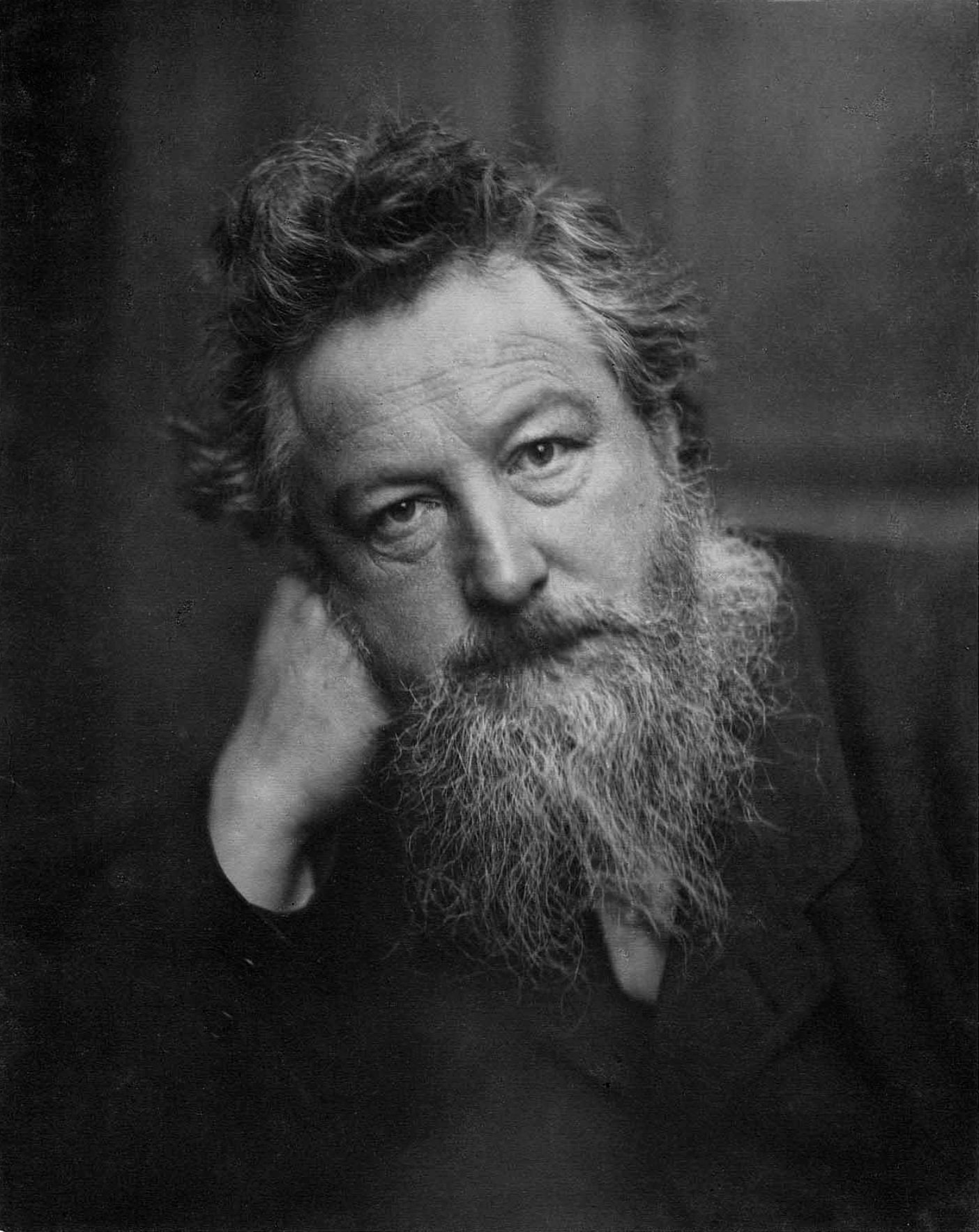
William Morris, age 53
By Frederick Hollyer - https://books.google.com/books?id=0ZQOAAAAIAAJ Google Books edition of J. W. Mackail The Life of William Morris in two volumes, London, New York and Bombay: Longmans, Green and Co., 1899, Public Domain, https://commons.wikimedia.org/w/index.php?curid=4578235
Morris lived from 1834 to 1896, and like a lot of eminent Victorians, he had an impressive breadth of accomplishments from interior design to politics. In addition to all this, he was a medievalist, and The Well at World’s End is one of his attempts to recreate prose romance in an era when the novel was becoming ascendant.
The style of the book is odd, and quite difficult to read. This is because Morris was self-consciously imitating a defunct mode of story-telling, and also because Morris used archaic Anglo-Saxon words like wot and rede. Thankfully, it is easy enough now to quickly search for the meaning of an old word, but this is a big barrier to entry for a casual reader.
The world Morris created is fascinating, and it is the reason I chose to start this book, and then persist when I got bogged down. The setting is recognizably medieval Christendom, most of all like England, but the details are dream-like and blurry such that it could be anywhere from the Danube to the English Mid-lands, and anywhen from the 9th to the 14th century.
This seems to be the source of the Ren Faire “Ye Olde Timey Mead Hall” depictions common in popular culture, but a copy of a copy isn’t quite as sharp as the original.
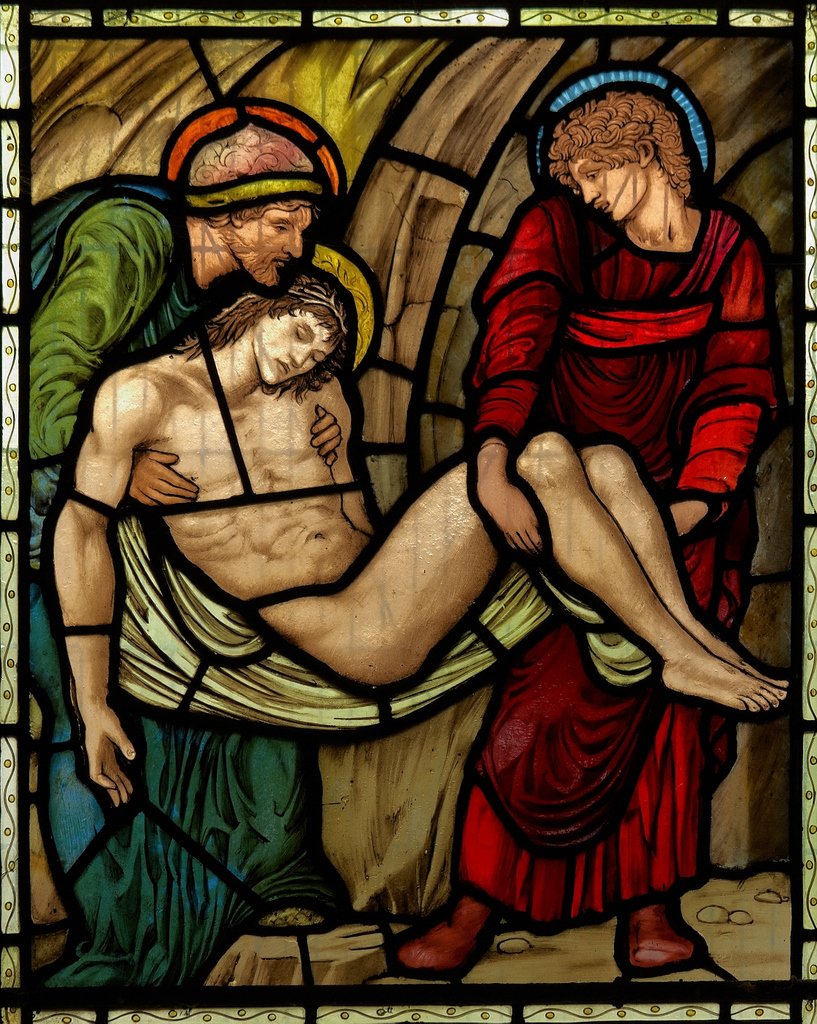
(All Saints, Middleton Cheney, Northamptonshire) The church contains important and very fine stained glass made by the firm of William Morris, with work by Morris,Burne-Jones,Philip Webb,Ford Madox Brown and Simeon Solomon.chancel N window,by Burne-Jones.Laying Christ in the Tomb.
By Dave - originally posted to Flickr as MIDDLETON CHENEY,NORTHAMPTONSHIRE, CC BY-SA 2.0, https://commons.wikimedia.org/w/index.php?curid=6183979
Reading Morris’ biography, I can understand the whys and wherefores of some of my complaints about The Well at World’s End . Morris did a good job of capturing the feel of a romance set in a generic Christendom, but while everyone is supposed to be Christian, even recognizably Catholic, it all feels curiously lifeless or featureless to me, as if the lived Christianity of his characters had all the edges sanded off. Morris himself was a thoroughly middle-class Englishman, but one who had drifted from the default Anglicanism of his class to atheism.
As such, I can see why he simply couldn’t appreciate the intensely lived faith of the people he admired so much. I don’t think it was for lack of trying, but he was on the outside looking in, and lived experience matters a great deal here. For a point of comparison, look at Poul Anderson’s The High Crusade. Anderson set his book in the 14th century, but like his peers H. Beam Piper and Jerry Pournelle, Anderson’s historical details are sharp and crisp, with period-accurate arms and armor. In addition, his characters really and truly believe in their religion, and act like it.
Anderson never became Catholic that I know, but reading his stuff I can tell he must have thought about it, because their actions resonate with me as a Catholic.
In Morris’ The Well at World’s End, there is much talk of Saints and the Mass and even the Eucharist, but these are all just pieces of medieval furniture rather than sacramental realities that shape his characters’ behavior.
For example, our young protagonist Ralph rescues the Lady of Abundance, an Ayesha-like beauty of great renown who drives men mad with lust, and promptly has sex with her. I can see a young knight like Ralph doing such a thing, but never at any point does Ralph express any guilt or seek out Confession, which an upright man of his class would most certainly have done.
Now, practices in the Middle Ages could be quite different than now, when weekly reception of the Eucharist has become the norm. Sometimes people would only take Communion a few times a year, seeking out Confession beforehand. But the book covers a period of almost two years, and Ralph never does this thing that would clearly have been required of him. There is also no mention of the ebb and flow of liturgical seasons, a major part of the life of Christendom that paralleled and complemented the ordinary seasons, and Confession and reception of the Eucharist are a part of this seasonal observance as well.
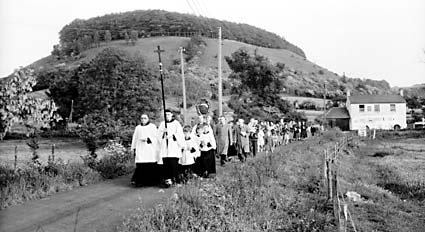
To moderns, whose faith has grown dim and who have no memory of such things, this might not stand out. But as a Catholic who knows something of the life of the period, I find it jarring.
Turning to the form of the book, Morris blended together two of Northrop Frye’s mythoi, romance and comedy. Morris set out to tell a story in the mode of a romance,
…the hero is superior in degree to other men and to the environment, but is simply an extraordinary human being. The laws of nature in romances are often not those that we meet in the real world, but they are self-consistent once they are established.
But the form combines the mythoi of an adventure or a romance:
…the radical of romance being a sequence of marvelous adventures…
with the ancient form of comedy:
…recognition of a newborn society rising in triumph around a still somewhat mysterious hero and his bride…
This too, is possibly the modern source of the stereotypical “fairy tale” ending of happily ever after, as in the ending of the book Ralph sweeps his enemies from the field, takes up his throne, rules justly and wisely, and sees many generations of his descendants flourish.
I think you could neatly bisect the book, with the first half being a relatively straightforward adventure with mystical elements, while the second half is how Ralph and his bride Ursula set the world right upon their return from THE WELL AT WORLD’S END. I found the first half to be the worse half, tedious and wordy. I haven’t read enough genuine medieval romances to know if this was typical, but a large fraction of the first half is descriptions of Ralph walking around and seeing things in a forest. In a way it is an interesting kind of pseudo-realistic style, with everything that Ralph sees and does described on the page, but it I found it boring.
The Well at World’s End is in reality what Tolkien’s work is often accused of being: over-long and too enamored of its invented archaic style. After a while, I got really tired of seeing “rede” instead of “advice”. I get that Morris was trying to preserve old things, in the way he did with buildings, but his efforts here seem toneless to me.
Compare Bilbo’s taunting song to the spiders in Mirkwood forest, which is a tour of old Middle-English terms for “spider”, in rhyming verse with skillful meter.
Old fat spider spinning in a tree!
Old fat spider can’t see me!
Attercop! Attercop!
Won’t you stop,
Stop your spinning and look for me?
There is some verse in The Well at World’s End, but I won’t bother to reproduce it. Morris was famed as a poet, but I cannot feel what he put this book in the same way I do Tolkien’s work. In overall impact, Morris probably edges out Tolkien due to his breadth of accomplishment, but if we limit ourselves just to prose romances, The Well at World’s End loses handily to The Hobbit, let alone The Lord of the Rings.
Things pick up considerably in the second half, as Ralph and Ursula return to all the places they visited on their wandering quest to find THE WELL AT WORLD’S END. The two-fold there and back again structure of the book is very striking. On the way, Ralph [and Ursula, mostly off-page] has many adventures, but I feel like some of the woodenness of the first half is because Morris was setting up problems for Ralph to fix on the way back. Things didn’t happen because the internal consistency of the story demanded them, but because Ralph needed to right a wrong in a particular location while traveling home to Upmeads.
But on the other hand, perhaps that is just the form that Morris was attempting to reconstruct. If you are writing a novel, the sequence of events needs to make narrative sense. If you are writing allegory, events must convey a message about the abstractions they represent, and The Well at World’s End is more like an allegory than a novel.
The Well at World’s End is not an allegory, but if you step outside of the conventions of the novel I think it makes more sense. Ralph is changed by his journey to THE WELL AT WORLD’S END, but happens is not that he gains experience or insight or anything psychological that might happen in a modern character arc. Drinking from the well changes who he is permanently, makes him someone different than he was before. The change is in fact very much like that which Christians believe is imparted by the sacraments of Baptism or Confirmation, an ontological change, but in this case the effects are all visible and this-worldly, making Ralph a great war leader and king. You do get anointed “priest, prophet, and king” during the Rite of Baptism, but it does not have the effect that see in the book, of being a leader who stands head and shoulders above all others.
Ursula is changed too, but in her case I think we mostly see the impact of the well in another way, by contrasting Ursula’s effect on the world with the Lady of Abundance. Both Ursula and the Lady drink from the well and are changed by it, but the Lady sows discord everywhere she goes, while Ursula fosters peace.
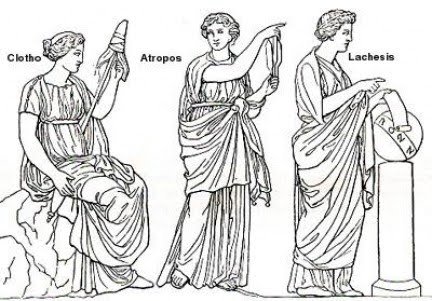
In order to see why, a deep dive into the nature of the Lady of Abundance is in order. Morris leaves her ultimate origins shrouded in mystery, but in her own telling as a girl she lived with a witch at the edge of the world, near enough to the well that her mistress often dealt with seekers after the well. The witch is not the Lady’s mother, but given that the Lady is already the “fairest in the land” from a very young age, we might speculate her unspeakable beauty hints at Fae heritage.
The witch is very much like one of the moirai, if the tale were told by a Celt instead of a Greek, spinning fates and casting dark spells. The Lady herself seems to be marked for death, perhaps as a consequence of her heritage, but for unspecified reasons the witch reenacts the sacrifice of Isaac, killing a goat in her place. I think we get a hint of why the Lady might have deserved death when we look at her works in the world, but we shall get to that in a bit.
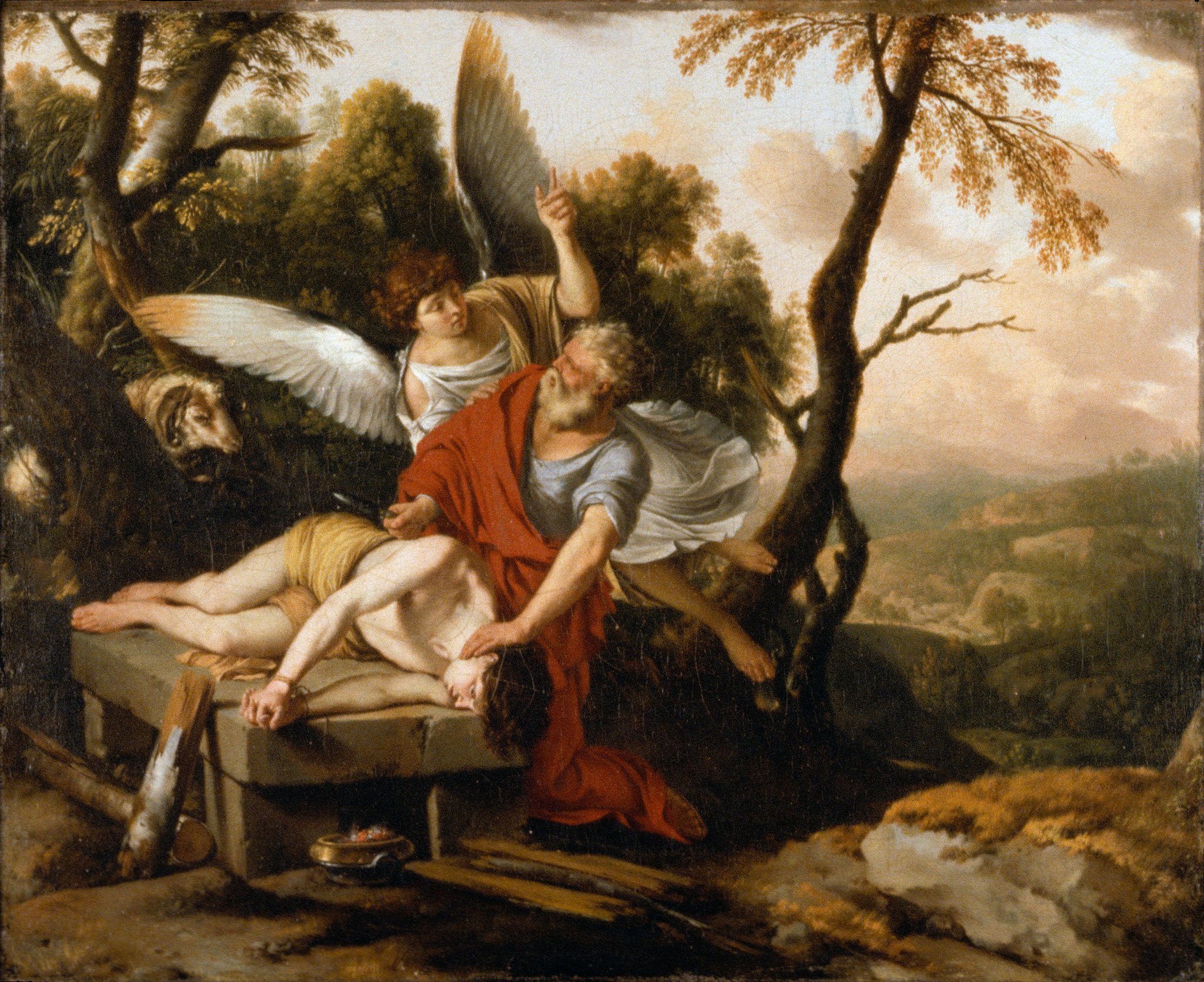
However, unlike the story of Abraham and Isaac, it is not an angel of the Lord that stays the witch’s hand that day, but some whim of the witch. And in fact the ultimate result of this is that the Lady in time slays the witch and enters the world, rather to its detriment, in contrast to Abraham’s acts, which create a new covenant with God.
Things come to a head when the Lady meets another, kinder witch in the forest who grants her knowledge, and ultimately the knife with which the Lady can slay her captor, and a handsome young man who the Lady immediately has sex with, and obtains a peculiar necklace that is needed to find the well. The handsome young knight fails to find the well, possibly because he traded the necklace for sex, but after his failure he takes the Lady back to his home and weds her.
However, in doing so he destroys his own kingdom. Nearly every man who sees the Lady desires her, except for a few who perceiving her effect upon other men, seek to destroy her. Yet the result in either case is much the same, open conflict and discord from the supernormal stimulus that seems to be her birthright. The young knight goes to war with his own father over the Lady. Ultimately, the Lady and her Knight are victorious, but the victory is hollow, as their children die either from war or pestilence, and the Knight himself dies young.
It is only after all this that the Lady finds THE WELL AT WORLD’S END. The power of the well does seem to do her some good, but it cannot fundamentally change her doom, as she is ultimately slain by a betrayed husband, the Knight of the Sun.

Ursula too, is a great beauty, but merely an earthly one. While it is true that sometimes men seek to possess her by force, in a striking contrast is only men who have already been identified as wicked and base who attempt it, like the Bear of Utterbol. Men of good heart are instead inspired to honor and protect her, such as the wild but not wicked Bull Nosey, who captures Ursula in a mountain raid, but then dies to protect her from the Bear.
Even more curiously, the only time otherwise stout-hearted men have a negative reaction to Ursula is when they were previously in the thrall of the Lady of Abundance. Men such as the tall champion of the Dry Tree, brother to the Knight of the Sun who kills the Lady his straying wife, or Roger of the Ropewalk. Their hearts are poisoned by the Lady, with the tall champion going so far as to try to kill Ursula in a fit of madness.
Other than the difference of their heritage, with Ursula being of ordinary and unremarkable birth, one of the primary differences between Ursula and the Lady is that Ursula can master her own sexual appetites, and the Lady cannot, or will not. Ursula will not have sex with Ralph until they are married, while the Lady flings herself at any dashing, broad-shouldered man she takes a fancy to. When her husband finally kills her, I’m not sure the Lady deserved death just for running off with Ralph, but when you look at the sweep of her life, its not exactly unjust either. The Lady was for the most part not consciously malicious, but she destroyed everything she touched.
In contrast, Ralph and Ursula together spread peace and justice wherever they go, with Ursula in particular inspiring men to be the best versions of themselves, instead of the worst. I had not expected one of the primary themes of this book to be that untrammeled female sexuality is intensely destructive. Rateliff made much of there being two important and powerful female characters in the book, which is a sign of the influence of first wave feminism in the Late Victorian era, but I clearly see something here that he did not.
And as interesting as I found all this, it really was a tough read. Foundational as this book may be, it wasn’t really fun.
The Well at World’s End can be found at Amazon or Project Gutenberg.

Comments ()